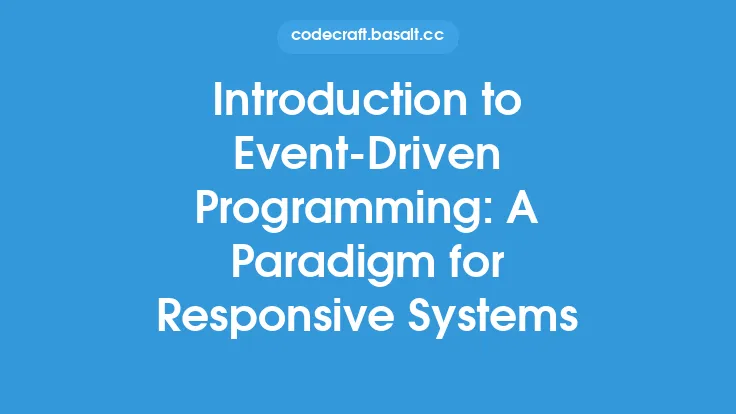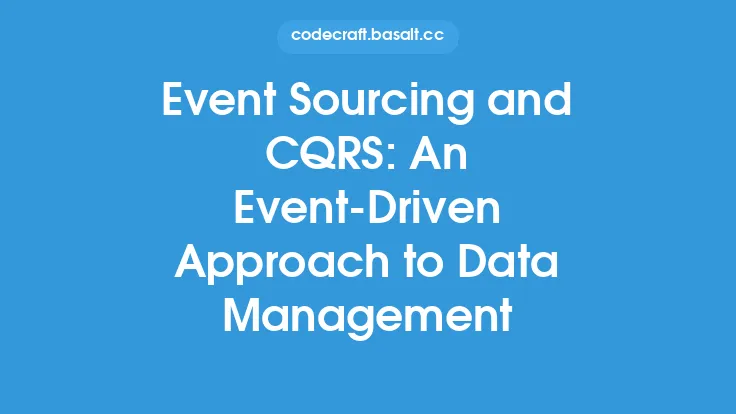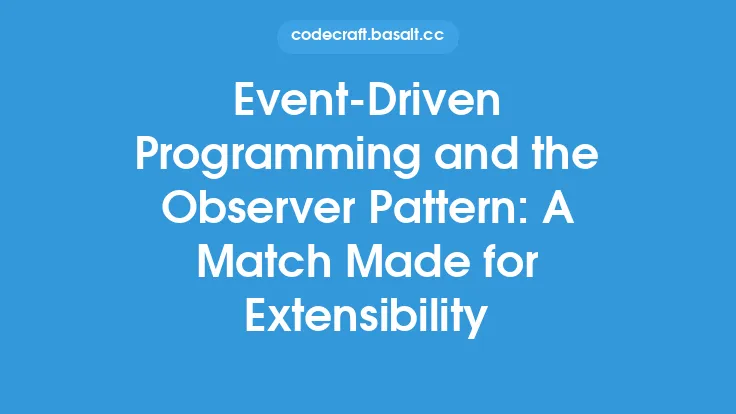Decoupling components is a fundamental concept in software design that enables developers to create more flexible, scalable, and maintainable systems. One effective way to achieve decoupling is through event-driven programming, a paradigm that focuses on producing and handling events to communicate between components. In this article, we will delve into the world of event-driven programming and explore how it can help decouple components, leading to greater flexibility and a more modular system architecture.
Introduction to Decoupling
Decoupling refers to the process of separating components or modules in a system to reduce their interdependence. This allows developers to modify, update, or replace individual components without affecting the entire system. Decoupling is essential in software design because it enables developers to create systems that are more adaptable to changing requirements, easier to maintain, and less prone to errors. By decoupling components, developers can also improve the overall scalability and performance of the system.
Event-Driven Programming Basics
Event-driven programming is a programming paradigm that revolves around the production, detection, and handling of events. An event is a significant occurrence or change in the state of a system, such as a user clicking a button, a network connection being established, or a timer expiring. In event-driven programming, components communicate with each other by producing and consuming events. This approach allows components to operate independently, without being tightly coupled to each other.
Decoupling Components with Events
In a traditional, tightly coupled system, components are often interconnected through direct method calls or shared data structures. This can lead to a rigid and inflexible architecture, making it challenging to modify or extend the system. By using events to communicate between components, developers can decouple them, creating a more modular and flexible system. When a component produces an event, it does not need to know which other components will consume the event or how they will react to it. This decoupling enables components to evolve independently, without affecting the rest of the system.
Benefits of Decoupling with Events
Decoupling components with events offers several benefits, including:
- Improved flexibility: Components can be modified, updated, or replaced without affecting the entire system.
- Increased scalability: New components can be added to the system without disrupting existing functionality.
- Enhanced maintainability: Components can be maintained, updated, or debugged independently, reducing the complexity of the system.
- Better fault tolerance: If one component fails or experiences errors, it will not affect the entire system, as other components can continue to operate independently.
Event-Driven Architecture Patterns
Several event-driven architecture patterns can help decouple components, including:
- Publisher-Subscriber Pattern: Components publish events to a central hub, and other components subscribe to receive these events.
- Event-Driven Architecture (EDA) Pattern: Components produce and consume events, using an event bus or message broker to facilitate communication.
- Microservices Architecture: Components are designed as independent services, communicating with each other through events or APIs.
Implementing Decoupling with Events
To implement decoupling with events, developers can follow these steps:
- Identify events: Determine the significant occurrences or changes in the state of the system that will be used as events.
- Design event handlers: Create event handlers that will consume and process the events produced by other components.
- Use an event bus or message broker: Implement an event bus or message broker to facilitate communication between components.
- Test and refine: Test the system to ensure that components are properly decoupled and refine the event-driven architecture as needed.
Challenges and Considerations
While decoupling components with events offers many benefits, there are also challenges and considerations to keep in mind, such as:
- Event complexity: As the number of events increases, the complexity of the system can grow, making it harder to manage and maintain.
- Event ordering: Ensuring that events are processed in the correct order can be challenging, particularly in distributed systems.
- Error handling: Developing effective error handling strategies is crucial in event-driven systems, as errors can propagate through the system if not properly handled.
Conclusion
Decoupling components with event-driven programming is a powerful approach to creating more flexible, scalable, and maintainable systems. By using events to communicate between components, developers can create a more modular and flexible system architecture, enabling them to adapt to changing requirements and improve the overall performance of the system. While there are challenges and considerations to keep in mind, the benefits of decoupling with events make it a valuable technique for software developers to master.





